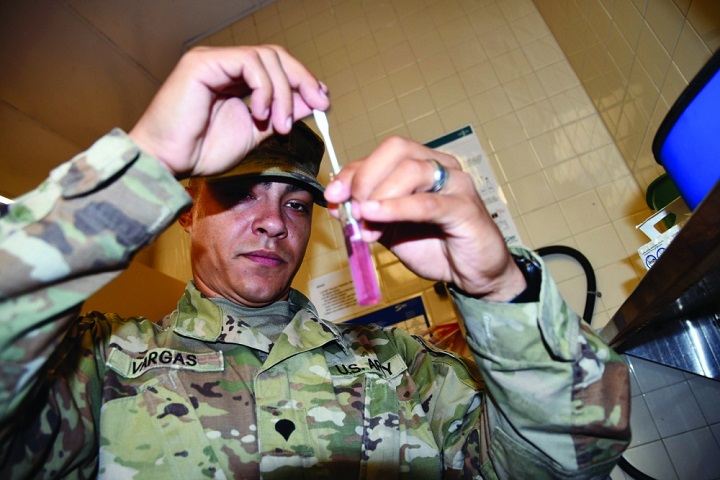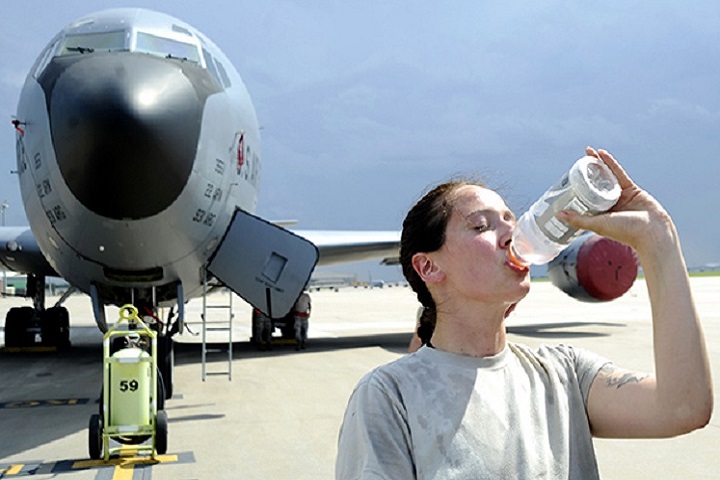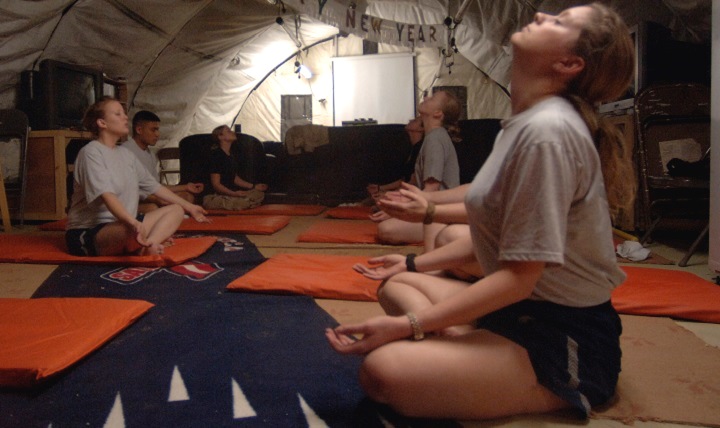
Reduce your risk of running and sports injuries

More than 80 percent of recruit injuries occur to lower body. (Image courtesy Army Public Health Center)
In the last year, more than half of all Soldiers were diagnosed with an injury. Those injured are usually treated through outpatient visits but may be severely limited in their ability to perform certain physical activities for weeks or months. In some cases, injuries even result in medical discharges from the Army.
Running is the number one cause of Soldier injuries
Two-thirds of Soldiers' injuries are musculoskeletal damage to a lower-extremity (i.e. the knees, ankles, lower legs and feet). Most are common cumulative conditions called overuse injuries. Overuse injuries occur over several hours, weeks or months from repeated low intensity forces to muscles, bones, joints, tendons and ligaments. Common overuse injuries include knee pain syndrome and chondromalacia ("runner's knee"), Achilles tendinitis, low back pain and stress fractures. Overuse injuries are the most frequent "injury problem" within the Army, costing billions in medical care and lost duty time. These injuries result from the substantial load bearing (i.e. on-foot) physical training conducted by Soldiers. "Running is the primary activity that contributes to the injury problem among Army recruits and Soldiers," explains Tyson Grier, a kinesiologist in the Injury Prevention Division of the Army Public Health Center. "Other activities such as foot marching further add to the stress on the lower body, increasing injury risk."
So is running bad for you? The simple answer is "no." Running is a very effective way to improve aerobic fitness – and being aerobically fit has been proven to reduce one's risk of injury. For example, recent data show that Soldiers who have slow 2 mile run times (i.e., men who take more than 15 minutes and women who take more than 19 minutes) have a higher risk of injury. Even Soldiers who "look" fit and are within body fat standards have a higher injury risk if they run slow.
So, though scientific studies have determined excessive running can increase injury risk, the right amount of running is still an effective way to improve and maintain aerobic fitness and resilience against injury. The key is finding the right balance. To reduce your risk of overuse injury:
- Mix up your training. Follow a training regimen that balances running with other aerobic exercises (swimming, biking, stationary elliptical or bike machines), strength training (resistance bands, plyometric or weight-training), speed and agility (e.g. shuttle runs), and balance work.
- Avoid running on repeated days. Alternate with low impact exercises.
- Use running shoes in good condition. Most people only need a comfortable, non-worn running shoe that fits. "As general guidance, replace running shoes every 300-500 miles or if any part of the sole starts to wear" recommends Grier. Evidence has not supported the value of "special" running shoes (control, arch, cushion or minimalist).
- Take a load off your feet. Ruck marching should not be used as an alternative to running. Carrying a heavy load long distances contributes to lower extremity injury. Avoid long runs and distances marches on back-to-back days.
- Pay attention to pain. Pain, especially in a joint (knees, ankles, hips) or bones (shins, feet) can mean you are increasing distance or frequency too quickly. If this is the case, the first step is to reduce running or consider an alternative exercise. If pain persists, seek medical evaluation.
Disclaimer: Re-published content may have been edited for length and clarity. Read original post.
Battlespace acoustics branch protects hearing, human performance
Article
8/17/2018

We look at how noise is being generated, how it propagates, and what that means for Airmen in the field
Getting off tobacco road leads to renewed relief
Article
8/10/2018

One service member’s struggle to become smoke-free
Three ways to protect your health through preventive care
Article
8/9/2018

Preventive services include vaccines, exams, and screenings
Environmental health works behind the scenes to keep Soldiers ready
Article
7/8/2018

On the team are a mix of military and civilian employees who conduct inspections, food safety training, water sampling and entomology services
Sports drinks: What are you really putting in your body?
Article
6/27/2018

In general, sports drinks are typically a calculated blend of carbohydrates, electrolytes and water
Five tips to improve men's health
Article
6/12/2018

Taking preventive steps and making changes to your lifestyle can improve your health
Breaking down anxiety one fear at a time
Article
6/5/2018

Generalized anxiety, panic disorder, and anxiety related to PTSD are common disorders. In fact, an estimated 31 percent of U.S. adults experience anxiety at some point in their lives; one marine discusses his journey.
Servicemembers demonstrate grace under fire
Article
5/21/2018

Five honorees celebrated at the 2018 Heroes of Military Medicine Awards Ceremony, including the Airmen for their heroic life-saving efforts during the tragic Las Vegas shooting on Oct. 1, 2017.
Getting tested for STIs is an 'important part of sexual health'
Article
4/26/2018

Chlamydia and gonorrhea are two of the most common sexually transmitted infections in the United States. Taking preventive steps, like getting tested and practicing safe sex, can help reduce risk of infection or spreading the infection to others.
Ready, set, focus: Finding calm in a storm through the power of breathing
Article
4/23/2018

‘Mindful minutes’ and deep breathing help on the job, airmen say
Deep vein thrombosis: What you need to know
Article
4/9/2018

Everyone’s potentially at risk, vascular surgeon says
Eat an apple a day, but don't keep the dentist away
Article
3/27/2018

Good oral health takes more than brushing teeth and flossing – it also requires proper nutrition
New DoD educational podcast series promotes better health
Article
3/5/2018

The instructional podcasts highlight health technology and offer tips, tools and techniques to help improve the lives of those in the military community
Pediatric care in the military rated 'excellent' but can improve
Article
2/27/2018

Experts say pediatric care within the Military Health System is excellent as they strive to improve and provide top-quality care for military children
Focus on prevention … not the cure for heart disease
Article
2/21/2018

Many heart health problems can be avoided





















.png)












No hay comentarios:
Publicar un comentario